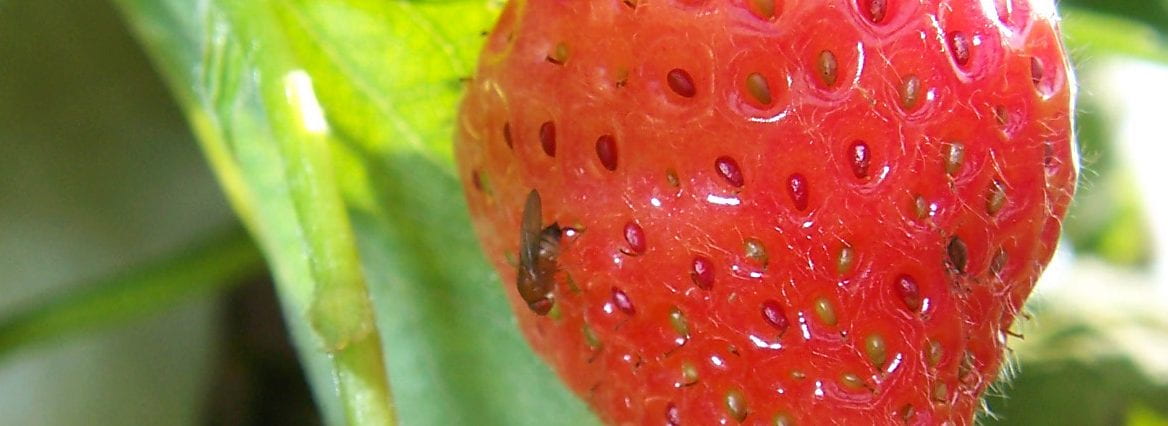For two weeks in a row, June 25 (2 males and 1 female) and July 2, 2019 (1 female and 1 male), SWD has been caught in raspberry in Niagara County. Traps are being monitored by Liz Tee, Cornell Cooperative Extension Lake Ontario Commercial Fruit Program.
Once SWD is found on the farm and fruit are ripe, protect the crop with insecticide sprays. Refer to the quick reference guides for:
SWD Insecticides for Berries, www.hort.cornell.edu/fruit/pdfs/swd/berry-insecticides.pdf
SWD Insecticides for Stone Fruit & Grapes, www.hort.cornell.edu/fruit/pdfs/swd/treefruit-grape-insecticides.pdf

Monitor fruit for infestation by SWD using salt flotation. Methods described in Guidelines for Checking Fruit for SWD Larvae in the Field by Laura McDermott, available on Cornell Fruit Resources, SWD pages, fruit.cornell.edu/spottedwing/.
Other management tactics that can help are:
- Sanitation – pick off and remove all cull fruit from the planting.
- Mowing – keep the environment hot, sunny, and dry.
- Weed management – keep the environment hot, sunny and dry, and provide no alternate hosts.
- Pruning – keep the environment hot, sunny, and dry, and improve spray penetration and deposition.
- Cold storage – place harvested fruit into a cooler at 32°-34° F ASAP and hold it there to kill larvae and eggs. Berries can tolerate 32° F storage conditions.

